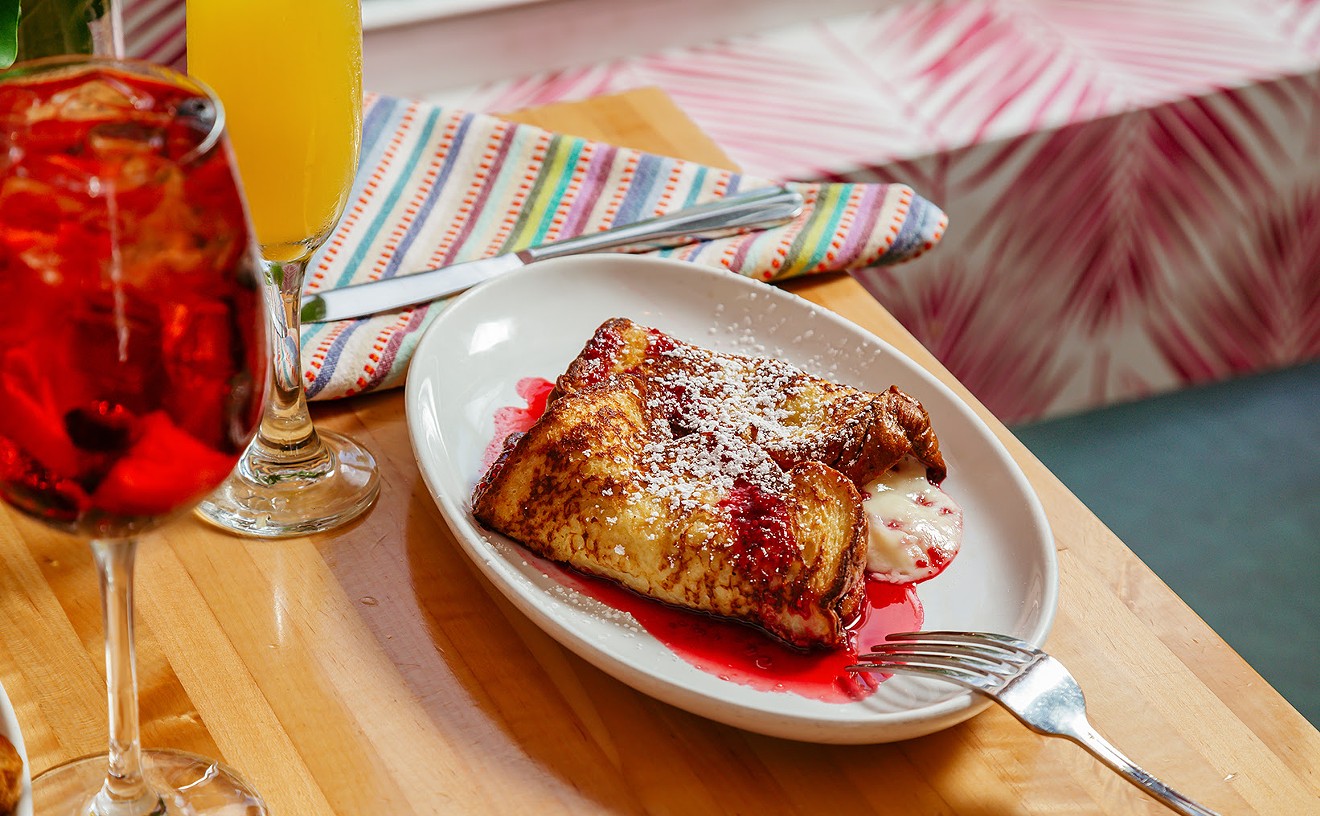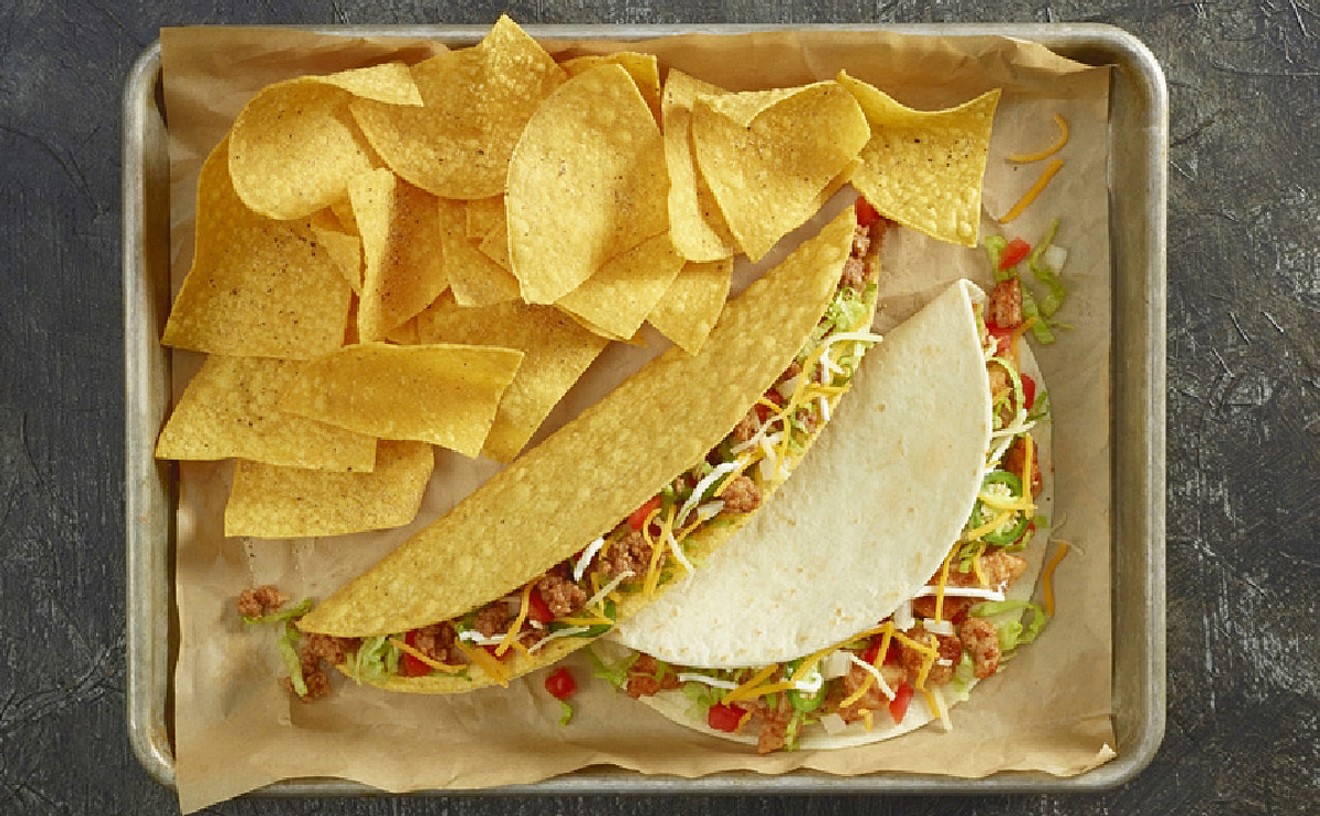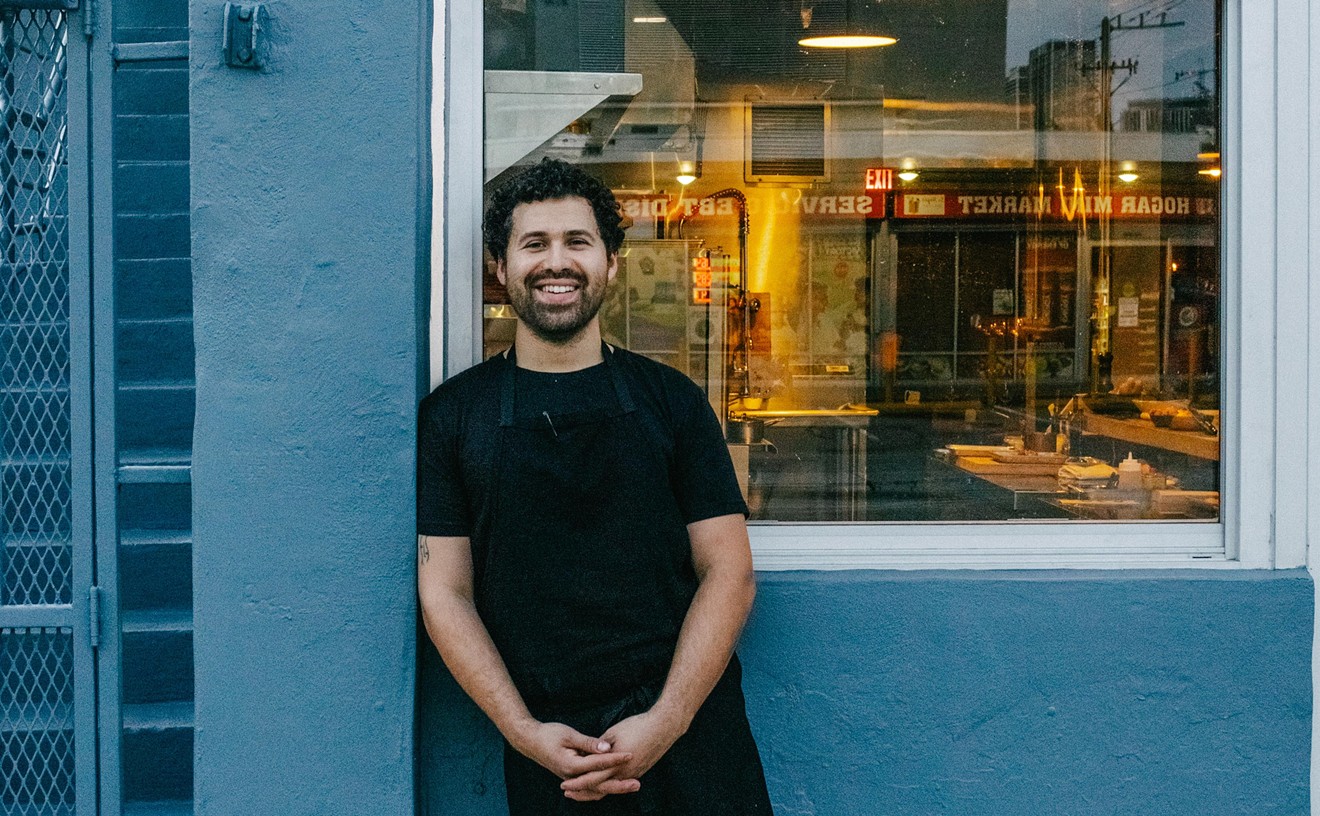Today's burgeoning restaurant/club scene in South Beach, exemplified by one-word wonders like Opium, Pearl, Tantra, and Touch, is a distant and decadent descendant of those dinner dances, albeit with distinct differences: The music is much louder and thumpier, of course; and more important, food and frolic take the floor at different hours -- the former first, then the latter. Regardless of how early you dine at these sorts of places, however, the ambiance generally reeks of a club waiting to happen. Not so with recently opened Rumi on the Collins end of Lincoln Road, which feels like a bona fide restaurant -- until 11:30 p.m. that is, which is when the music is pumped up, the lights dimmed down, tables and chairs replaced with smaller cocktail tables and ottomans, and a giant Murphy bed descends from the wall. The lounge is now open.
The outside of Rumi is pure club at all times, with curtained windows, velvet ropes, and no signage (you might want to make a mental note of the exact address before setting out). The front room is handsome and low-key, the people and bottles of alcohol that line up across a bar to the left providing the only colors to be found among varying shades of beige and brown. Earth tones extend beyond the bar into the restaurant via cream walls and wood flooring, but striped burgundy banquettes and bright, sunburst-patterned polyurethane tables contribute dramatic splashes of color. Although shoebox-shaped and windowless, Rumi is in fact exquisitely designed in an urbanely hip style, and made to feel roomier by way of peach- and blue-tinted mirrored walls and staggered levels of a giant lighting fixture hanging matrixlike from a tall mirrored ceiling.
Our first visit to Rumi occurred during one of three consecutive Thursday-evening benefits held on behalf of the Red Cross. It was a generous offer by the restaurant, a four-course meal and glass of champagne in exchange for a twenty-dollar donation. Cut-rate pricing (entrées usually run from $15 to $28) was only one deviation from the normal Rumi dining experience. Another was the lack of any menu from which to choose. You ate what they served, each person at the table being given something different. It wasn't uncommon to witness diners exchanging plates, trading soup for salad, pork for salmon, pudding for sorbet, and so on. But unless you had an allergy or aversion to a certain food, I'm not sure it made much difference what dish was placed in front of you; everything looked equally delectable.
Highlights of the two meals served at our table: silky potato chowder with flakes of smoky grilled salmon. Seared tuna tataki atop sprightly cabbage salad. Both main-course plates with juicy slices of meat fanned across them -- pork tenderloin with pearl onions on a baby-food-soft purée of calabaza squash, and center-cut strip loin with a homemade Worcestershire demi-glace over a similarly baby-food puff of mashed potatoes (starches and vegetables tended to be baby by portion as well, and not just on Thursdays). For dessert orange flan was textbook, and "banana chocolate chip brownie" was really more a banana cake with chocolate but nonetheless fetching with vanilla ice cream.
Subsequent dinners would confirm the virtues of simplicity exhibited during the benefit meal. Scott Fredel and J.D. Harris, co-executive chefs, have between them worked under a veritable who's who of culinary stars both local (Mark Militello, Norman Van Aken, Pascal Oudin) and national (Thomas Keller, Jean-Georges Vongerichten, and Emeril Lagasse). Rumi's food is self-defined as "Floridian Nouveau Cuisine," as in contemporary French technique with a slight Caribbean influence. But it's actually just uncomplicated cuisine that resounds with the essence of intense stocks, robust sauces, and fresh, intrinsically tasty ingredients imbued with just enough creative flourish to keep one's interest piqued. For instance: an unfussy yet unique starter of boniato gnocchetti, light dumplings in a cream sauce topped with Parmigiano-Reggiano and freshly cracked allspice. Or Bibb-lettuce salad tossed with an elemental lemon-and-tarragon dressing that seemed almost radical in its ability to refresh. Or a main course of about 30 succulent mussels steamed with sugar cane and rum, the sweet, molasseslike aromas providing an intoxicating kick. We shared the mussels as a starter, leaving us seven entrées to choose from the short, no-nonsense menu.
Concerning the two other seafood offerings: Baked salmon with grilled leeks, sweet potato, red-onion marmalade, and mustard didn't sound as alluring as mangrove snapper with hearts of palm croquette and peppery tomato broth. So we went with the snapper, the skin crisply seared, the croquette like a crackly potato pancake, the thicker-than-broth sauce a caramelized reduction of onions, garlic, and tomatoes with a healthy spike of Scotch bonnet peppers.
Good choice if I say so myself, though not nearly as peerless a pick as Sonoma duck, rare slices of breast floated upon a dusky bed of honey-sweetened baked beans and sided by two petite, delicate crêpes filled with luxurious ginger cream. Pieces of grapefruit sections were mushily buried in the beans. I'd have preferred them on top of the bird, where their cool, crisp properties would have added more of a textural contrast. Still the citrus provided an acidic undercut to whatever fat there was, and a properly sour counterpoint to the honey. Daffily delicious, ducks fly no higher than this.
The wine list consists of roughly two dozen selections, three quarters of which are from California, the rest mostly French; the average price per bottle is about $55. That's a rather limited collection, but Rumi currently is compiling a stock of reserve wines. The selection of desserts is also short, with four of five options based on fruit: the aforementioned orange flan and banana "brownie," as well as key lime pudding with graham crackers, and fresh fruit with lemon sorbet.
Light is the right finish for such ethereal dining, though chocoholics may go home bitter. I suggest they first try the café con leche coffeecake, which is similar in concept to the ubiquitous disks of chocolate soufflé cake making the restaurant rounds, except without the chocolate. Instead a puck of buttery cake spills molten coffee cream upon fork's impact. Don't fret, cocoa-bean lovers. Three chocolate-coated coffee beans and a quenelle of vanilla ice cream in crushed chocolate wafers completes the dessert, which left us with that all-too-infrequent feeling of total satisfaction. That's the way we left Rumi, too.











